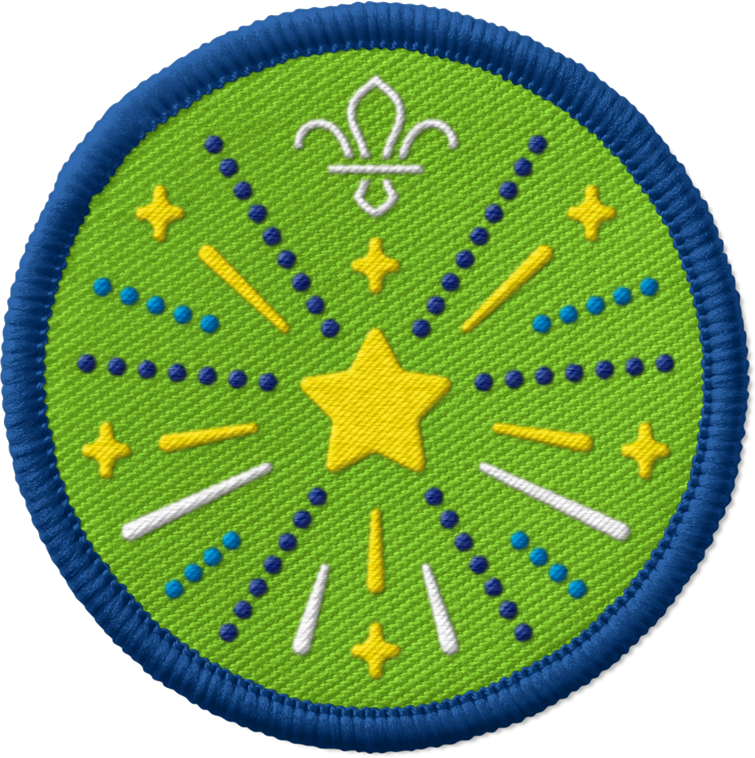
Planning and running a community event
You’ll need
- Any equipment, such as tables, chairs, plates, cutlery and decorations
- Any food, drinks or activity equipment
Before you begin
- Use the safety checklist to help you plan and risk assess your activity. There's also more guidance to help you carry out your risk assessment, including examples.
- Make sure all young people and adults involved in the activity know how to take part safely.
- Make sure you’ll have enough adult helpers. You may need some parents and carers to help.
Planning and setting up this activity
- Use our guidance for organising a community event.
- Start planning for your event as soon as you can. This helps you to get any licences or permits that you may need.
Things to consider for running a community event
Advertise for a team: Ask for volunteers and advertise different roles or tasks. Let people know how what they’re being asked to do or see what skills they could offer.
Gather interest: Create a simple, quick and easy online form for people interested in volunteering. You can use Google Forms for free.
Have team leads: You could have a smaller core team to lead and manage the event, with lots of helpers on the day.
Delegate tasks: Create a list of tasks and delegate, allowing people to use their skills in the best way. Make sure everyone knows and understands their role and responsibilities.
Have regular planning meetings: Make sure any meetings are accessible to everyone, including parking or public transport. Meeting online might help more people to attend too. You may want to have a WhatsApp group, or similar, too. Read at our guidance on digital safeguarding.
Be contactable: You might want to set up an event email address. On the day, you might want a way for people to spot the organisers or people running the event. They could have lanyards, t-shirts or high-visibility jackets to help identify them.
Define the purpose: Decide on why you want to run this event. It could be for fun, to bring the community together, to advertise Scouts, to develop skills, to welcome new volunteers or young people, or to fundraise. This might help you to define what kind of event you want to run.
Fundraise: Use our fundraising guidance for fundraising ideas and advice. You’ll need to think about how you’re managing and collecting money on the day.
Inspiration: Some ideas for community events include:
-
- A quiz
- Street party
- Bingo
- Bake sale
- Art displays
- Seasonal community events, such as Christmas fairs and carols, Easter egg hunts, Bonfire Nights or Eid
- Board game evenings
- Swap shops or jumble sales
- Craft workshops
- Talent shows or concerts
- Fetes or funfairs
- Comedy or open-mic night
- Movie night
- Sports day
- Gardening or conservation project day
- Fun run
- Family sports day
- Litter picking
- Murder mystery
- Skills day, such as dance, arts and crafts, or yoga
- Open events or taster sessions
Put a budget together: Create a budget for the day and allow contingency for any unpredicted expenses. You should map out the costs of putting on your event and make a spreadsheet of everything you’ll need to pay for. You could identify savings you can make and, try to find areas you can save on that don't affect the overall experience and objectives.
Work out how it’s funded: Depending on the event you’re running, there may not be any income from it, so you’ll need to work out how it’ll be funded. You could use gift aid, fundraise or apply for grants.
Ask for support: Talk with your Districts and Counties/Areas/Regions too. You could find out if they’d have any money to support this event locally, especially if it’s a fantastic opportunity to welcome and sign up new volunteers. You might also be able to get local business sponsorship or donations.
Choose a venue: Your event can take place anywhere that people in your local community can get together. Some suggestions include a local Scout building, your current meeting place, a local community hall, a leisure centre, a park or somewhere else in your area. Your space will need to accommodate any activities you want to offer too, such as having a kitchen.
Check for permissions: Remember to check for permissions and permits. You may need a licence, landowner permission or a permit for your event. If you’re running a street party, you may need to get a permit, get council permissions for road closures and let local residents know, as they may need or want to move any vehicles.
Choose high-traffic areas: For some events, you may want to use spaces that often have high footfall or is close to lots of people.
Make sure it’s accessible and inclusive: Choose an accessible, inclusive venue and location. You should consider disabled access, prayer spaces, public toilets access, lifts, ramps, emergency services access, car parking and public transport links. You may want to visit the venue before the event.
Organise documents: Get a copy of the hire contract, an invoice and receipt of payment, and a copy of the risk assessment and any insurance. A venue might also ask for a copy of our Public Liability certificate, which you can get from Unity. There’s more information on the government website.
Have backups for outdoor venues: If the location’s outside only, you may need to think carefully about toilets and food preparation spaces. In case of bad weather, you may need to plan an indoor or sheltered meeting point.
Plan ahead: Decide when you want to run your event. You'll want to plan your event at least 6-8 weeks in advance to organise the event and tell people about it.
Make sure there are no clashes: You may want to check the calendar to make sure the event isn’t on the same day as something else happening locally, a large event (such as a World Cup final), or on another festival or celebration (such as Eid or Diwali).
Choose your audience: Think about who’ll you’ll invite to your event. It can be as big or as small as you want. It may be for your section, your Group, Scouts in your local area or your wider community.
Plan numbers: You may have a limit to the number of people allowed in your venue or that you can have at your event. You need to decide if people need to RSVP too and how they’ll do this.
Plan ahead: From the start, think about accessibility and make sure your venue, and any activities and games you run are suitable for all ages, ability and backgrounds. Use our equity, diversity and inclusion pages, including running inclusive events for all beliefs.
Ask people: You could ask people to confirm any dietary requirements and/or accessibility needs when responding to the event if people are being asked to RSVP or complete a consent form.
Food and drinks: Making sure all dietary needs and allergies are catered for. You may need to ban some items for severe allergies, such as nuts.
Plan inclusive activities and resources: Make sure games and activities are accessible to everyone and a wide range of inclusive activities are offered. For example, you may need to have some seated games, left handed equipment or large print resources.
Have an accessible venue: Things to think about for disabled access include ramps, hearing loop systems, well-lit rooms, clear signage, accessible parking, lots of seating, lifts and disabled toilets. You might also want to have a quiet calming space for taking a break, as well as space for a prayer room. You may need to consider an emergency exit plan that includes everyone. Take a look at the National Autism Society’s advice on creating events that are accessible to autistic people or those with sensory differences.
Communication: You may need to hire interpreters, including for Makaton or BSL, or have resources in multiple languages. You may also need resources to be available in braille, large print or as visual resources. Making sure any slides and presentations are accessible too.
Be baby-friendly: Have baby changing facilities, storage space for pushchairs or prams, and a quiet, comfortable space for breastfeeding
Use pronouns: Having optional spaces for pronouns on name badges or any relevant resources.
Have a layout that’s suitable: Make sure floor plan layouts, such as tables and chairs for a quiz, are planned to facilitate movement and access for wheelchairs and mobility scooters.
Have warnings for flashes: Making sure there are warnings for any flash photography, loud music, strobe lights or flashing images
Consider public transport: Make sure the venue is accessible by public transport, bicycle, cars and walking.
Keep it simple when talking about Scouts: Avoid using acronyms and Scouts jargon as much as possible, as this may confuse people.
Think about event planning and safety: Consider the safety of your event and plan for any risks. There are two very important safety factors when it comes to running your day: trying to prevent something going wrong and getting cover for it in case it does. Use our guidance for event planning and safety.
Have a risk assessment: You must complete a thorough risk assessment and take appropriate steps to reduce risk throughout the planning and running of the event. You should use our safety checklist to help you plan and risk assess your activity. Use our guidance to help you carry out your risk assessment, including examples. Some particular risks to consider include:
-
- the use of fireworks, bouncy castles
- sports or other physical activities
- hot weather
- cold weather
- food safety
- allergies
- dietary requirements
- first aid and medical insurance
- large crowds
- young people moving and running about
- the availability of alcohol at the event
- safety hazards at the venue
- the activities you plan on running
Safeguarding: Always follow the Yellow Card, making sure all adults involved in the organisation and running of the event (including any external suppliers) have read and understood it. Find out more about safeguarding.
Decide on music: If your event’s likely to feature live or recorded music (even if it’s background music) or video, you may need various licences. Check what you’ll need in advance, so you’ll have everything sorted. Find out more about music licensing.
Think about movies, films, clips or TV shows: If anyone at your event is showing a video, film clip, DVD or TV programme, motion picture licences and permissions may be required. It’s best not to do this unless your event depends on it. You can always show videos from our Scouts YouTube channel.
Check your insurance: Check that any existing insurance allows you to run the event. You may need to get additional events insurance.
-
- If it’s an event just for Scouts and the activities are allowed under POR, then the Scout groups organising the events will be covered under the Scouts Public Liability policy.
- If it’s a public event, Unity Insurance Services (a specialist Scouts insurance broker) advises that you’ll need Public Liability Cover to protect you against claims for any injury to the public or damage to other people's property.
- If you already have insurance, check your policy to see exactly what you’re covered for, as you may need additional event insurance.
Contact Unity: For more information or any questions, get in touch with Unity on 0345 040 7703. They'll be happy to help. You can also take a look at their 'How to' guide for arranging event insurance. You might also be asked for a copy of our Public Liability certificate, which you can get from Unity. There’s more information on the government website.
Decide if you’ll charge and how much: You may use your event to raise money, or you may simply be doing it for people for free. It may also not be that kind of event. If you’re fundraising you may charge people entry fees, with any activities or items then being free. Alternatively, you could also charge per activity or item. It’s best to keep any fees low, such as £5 for entry or £1 per item.
Plan how you’ll manage the money: You may want to have a token system, so all the money is handled in one place on the day. Each activity or item could be worth a certain amount of tokens. People then buy tokens to spend on the activities.
Have secure places to store money: There might be lots of money on the day. Make sure to have a lockable tin or safe to keep it in securely.
Have card payment options: As more people use contactless or card payments, you may want to have a card machine or way for people to pay online. Find out more about banking.
Plan the entertainment: Plan some activities and games for keeping everyone entertained. Take a look at our Scouts activity finder.
Plan an Emergency Rendezvous Point (ERP): This'll be used in the event of an emergency incident occurring during the event. Tell people where this is. An emergency card or poster should easily identify the location of the ERP (by use of a mini-map or What3Words location). It should also provide telephone numbers for at least two of the event organising team. You may want to include the first aid details or day's schedule on this card too.
Follow the purple card: Remember to follow the Purple card guidelines in the event of an emergency or incident.
Have a first aid point: Plan who your first aiders will be and where there’ll be a first aid kit. Make it clear who these people are, such as by having a first aid station.
Sign people in and out: You should have a register to check everyone in or out, and ask people to check in with you before leaving the event. It's important to register who attends on the day for emergencies to keep everyone safe.
Have a safety briefing: Depending on the event, you may have a welcome safety briefing at the start, either for those running the event or for those attending, or both. Any first aid details, emergency meeting points, fire information, event safety specific information and a briefing on the emergency procedure they're expected to follow for the event should be provided. You can also remind everyone that they're representing, so need to be mindful of this and follow their Scouts values.
Consider all dietary needs: If you’re having food and drink at your event, you must consider allergies and food intolerances, different dietary requirements or anyone who may be fasting. You may need to have this information from attendees before the event. Some things to think about include:
- Identifying people with specific dietary requirements with coloured stickers or wristband.
- Keeping allergen-free or dietary requirement food separate from other food when serving or at a buffet. You could put the allergen-free food on different coloured plates, so that everyone can tell the difference.
- Cook allergen-free products at the top of the oven with foil over them to prevent cross contamination.
- If someone needs to use a certain type of food, such as gluten free biscuits, it’s often easier to buy these for the whole group, rather than having two separate biscuits on offer.
- You may need to make sure that there’s no cross-contamination during the storage, preparation, cooking and serving of food. For example, you may need to use different cooking areas and using different utensils or equipment, such as toasters, scissors, barbecues, chopping boards and tongs.
- Make sure to keep all the food packaging or ingredient lists, so that it can be shared with them if needed.
Follow good food practices: Always plan and follow good food hygiene, food preparation and food safety practices. Take a look at the Food Standard Agency (FSA) guidance on providing food at charity and community events.
Get decorating: Decorate your venue with a theme or using certain colours. It’s best to avoid balloons, due to latex allergies. You could make recyclable or paper and fabric decorations instead. Get local groups involved to make decorations, such as bunting.
Use the brand centre: Take a look at the Scouts brand centre for some Scout-branded promotional products you could use, such as leaflets on tables or pop-up banners.
Have a welcome table or greeters: You could have people assigned to greeting people at the entrance with a smile. They could help direct people, tell them what’s happening, help people sign in and offer a warm welcome. They could also be the help desk or point of contact for the event, such as for lost property.
Give out name tags: You’ll be meeting a lot of new faces and names. Hand out sticky labels for people to write their names on will let your community know who you are. People could include their pronouns on these badges too if they want to.
Use our social media toolkit: Use our social media toolkit to get top tips and guidance on how to use social media to engage with people outside of Scouts.
Advertise on social media: You could create an event on Facebook or share posts on social media. This’ll help you spread the word about your event and encourage your community to stop by. You could also advertise your event in local Facebook groups or Scouts Facebook pages. Read at our guidance on digital safeguarding.
Have your own hashtag and tag Scouts: You could have a special social media # for your event, so everyone can share their posts and join in the fun. Remember to tag your local Scouts social media too.
Invite the media: Learn to generate positive local media coverage on the radio, in print and online outlets with our media toolkit.
Assign someone to take photos: Try to take some photos and videos of your celebrations, so you can treasure the day in your memories.
Get permission: Make sure you’ve consent forms and permission to take someone’s photograph first. It’s always best put up posters or tell people that photography and filming will be taking place at your event, including who to speak to if they wish to opt out. You could ask people to wear wristbands if they don’t want to have their photo taken, so the photographer will know who to avoid.
Keep it tidy: Make sure to tidy up after the event, leaving the venue clean and tidy. Always try to donate, reuse or recycle anything leftover at the end. You may want to store reusable or non-used items for the next event, such as bunting.
Say thank you: It’s always good to say thank you to those who helped to plan and run the event, as well as those who attended it. You could say thank you on the day, send a card, give a shout-out on social media, or give them a special thank you badge. You could use some of our ideas for thanking people.
Welcome new members: You may have used the event to welcome or advertise Scouts to potential new volunteers and young people. Make sure to keep in touch and thank them for attending. You can use our top 10 tips to welcome people after recruitment events.
Reflection
This activity gave everyone the opportunity to experience a community event, by either planning, attending, or both. How did your event go? What were your highlights?
Planning an event like this can take a lot of thought, organisation and preparation. How did your planning and organisation go? Did everyone work well as a team? How did you divide the tasks or roles, so everyone could get involved?
Safety
All activities must be safely managed. You must complete a thorough risk assessment and take appropriate steps to reduce risk. Use the safety checklist to help you plan and risk assess your activity. Always get approval for the activity, and have suitable supervision and an InTouch process.
- Outdoor activities
You must have permission to use the location. Always check the weather forecast, and inform parents and carers of any change in venue.
- Active games
The game area should be free of hazards. Explain the rules of the game clearly and have a clear way to communicate that the game must stop when needed. Take a look at our guidance on running active games safely.
- Cooking
Teach young people how to use cooking equipment safely. Supervise them appropriately throughout. Make sure it’s safe to use and follow manufacturers’ guidelines for use.
- Food
Remember to check for allergies, eating problems, fasting or dietary requirements and adjust the recipe as needed. Make sure you’ve suitable areas for storing and preparing food and avoid cross contamination of different foods. Take a look at our guidance on food safety and hygiene.
- Phones and cameras
Make sure parents and carers are aware and have given consent for photography.
- Visits away from your meeting place
Complete a thorough risk assessment and include hazards, such as roads, woodland, plants, animals, and bodies of water (for example, rivers, ponds, lakes, and seas). You’ll probably need more adult helpers than usual. Your risk assessment should include how many adults you need. The young people to adult ratios are a minimum requirement. When you do your risk assessment, you might decide that you need more adults than the ratio specifies. Think about extra equipment that you may need to take with you, such as high visibility clothing, a first aid kit, water, and waterproofs. Throughout the activity, watch out for changes in the weather and do regular headcounts.
- Hot items and hot water
Kettles, cookers and microwave ovens produce a lot of heat by the very nature of them. Caution is needed when in contact with items that have been heated and young people should use them under adult supervision. Use on a suitable surface, protecting it if necessary. Never leave hot items unattended and make sure there’s a nearby first aid kit, with items to treat burns/scalds.
- Gardening and nature
Everyone must wash their hands after the activity has finished. Wear gloves if needed. Explain how to safely use equipment and set clear boundaries so everyone knows what’s allowed.
- Glue and solvents
Always supervise young people appropriately when they’re using glue and solvent products. Make sure there’s plenty of ventilation. Be aware of any medical conditions that could be affected by glue or solvent use and make adjustments as needed.
- Scissors
Supervise young people appropriately when they’re using scissors. Store all sharp objects securely, out of the reach of young people.
Make it accessible
All Scout activities should be inclusive and accessible.



